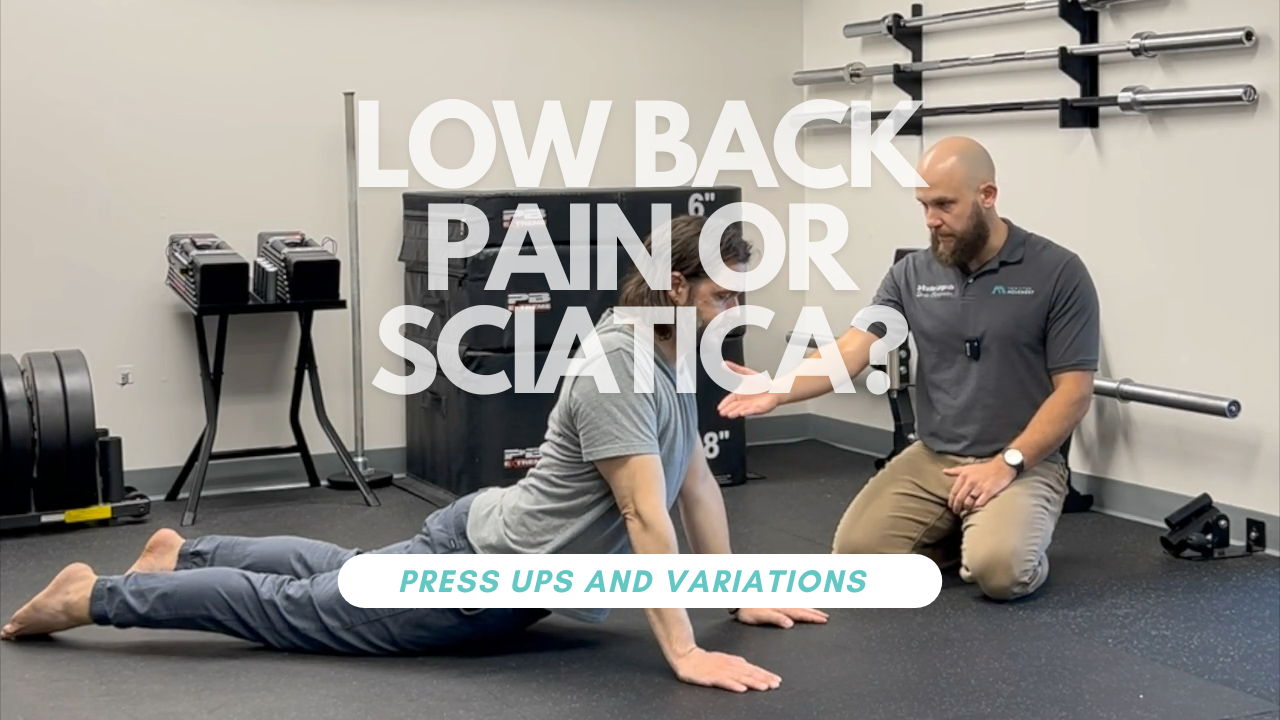
Are you among the many who’ve experienced that twinge in your back when bending forward to tie your shoe or lifting something from the floor? If so, you’re not alone. Low back pain or sciatica are common issues that affect people of all ages and backgrounds. Fortunately, there’s a simple exercise that can offer relief: the press up.
In this blog post, we’ll delve into the fundamentals of press ups and their role in alleviating low back pain and sciatica. Whether you’re a seasoned athlete or someone looking for ways to manage discomfort, understanding how press ups work can make a world of difference.
What is a press-up, and how can it help with sciatica?
Press ups are particularly beneficial for individuals who experience pain or stiffness when bending forward, such as those with flexion-related back injuries. By promoting extension of the spine, press ups help counteract the effects of prolonged sitting, bending, or lifting, which can exacerbate back discomfort.
Press ups, also known as prone press ups or McKenzie exercises, are a series of movements designed to promote spinal extension and alleviate discomfort associated with flexion-related back pain. The goal of press ups is to gently stretch and mobilize the spine, gradually increasing range of motion and reducing stiffness.
How to do a press up for your low back pain or sciatica
To perform press ups, follow these steps:
Positioning: Begin by lying face down on a flat surface, such as a yoga mat or exercise mat.
Relaxation: Aim to keep your body as relaxed as possible, especially from your shoulder blades down to your feet. Avoid tensing your low back muscles.
Hand Placement: Place your hands on the floor beneath your shoulders, as if you were preparing to do a push-up.
Execution: Keeping your hips grounded, slowly straighten your elbows to lift your upper body off the floor. Focus on extending your spine while maintaining a relaxed posture.
Range of Motion: Press up until you feel a gentle stretch or discomfort in your back, then lower yourself back down. Repeat for a series of repetitions, typically starting with sets of ten.
Modifications for the press up for when your back pain is getting better
Depending on your level of comfort and mobility, there are several progressions and modifications you can explore:
Prone Prop on Elbows: If traditional press ups are too challenging, try propping yourself up on your elbows and holding the position for a set duration. Focus on breathing deeply and relaxing into the stretch.
Alligator Breathing: This modification involves lying flat on your stomach with your hands under your forehead. Practice deep belly breathing to promote relaxation and spinal extension.
Over Pressure: For added benefit, incorporate over pressure by gently sagging your lower back at the top of each press up repetition. This can help deepen the stretch and increase range of motion.
Is it Time to Challenge Yourself to Get Rid of Your Low Back Pain or Sciatica?
While press ups can be beneficial for many individuals, there are certain situations where they may not be appropriate:
Hyperextension Pain: If you experience discomfort when extending your spine, particularly if you work in professions that involve prolonged overhead activities, press ups may exacerbate your symptoms.
Seek Professional Guidance: If you’re unsure whether press ups are suitable for your condition, consult with a healthcare professional or qualified fitness instructor before incorporating them into your routine.
Check out our YouTube Channel for this video and more!
Press ups offer a simple yet effective way to alleviate back pain and improve spinal mobility. By incorporating these exercises into your routine and gradually increasing intensity as tolerated, you can take proactive steps towards a healthier, more resilient spine.
Remember, consistency is key. Be patient with yourself as you progress through the exercises, and listen to your body’s signals along the way. With dedication and perseverance, you can experience the transformative benefits of press ups and reclaim control over your spinal health.
